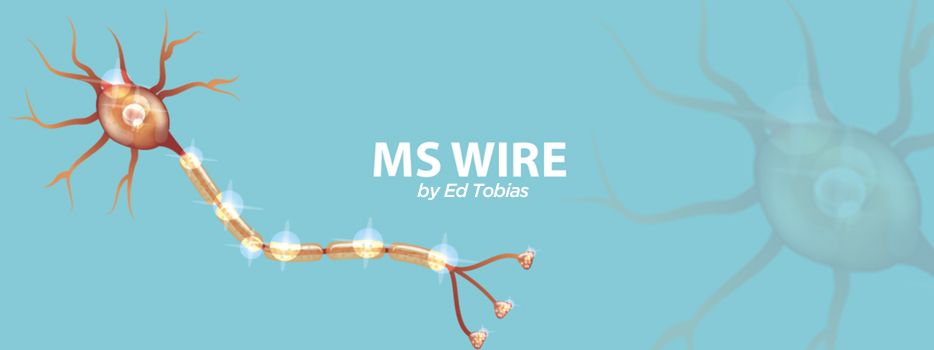MS News That Caught My Eye Last Week: Nanocrystals, ‘Cog Fog,’ Mapping MS, Ocrevus

Clene Awaits US Patent Covering Gold Nanocrystals’ Use in Treating MS
This is a different approach to MS treatment. It uses very tiny crystals to produce a chemical reaction. It is hoped that this reaction will protect neurons and help to generate myelin. So far, there have only been animal tests of this process. Will there eventually be MS gold found in these gold nanocrystals?
Clene Nanomedicine has been notified it will be given a U.S. patent, as requested, covering an invention using the company’s already patented gold nanocrystals for the treatment of multiple sclerosis (MS).
A Notice of Allowance was received by the company. These notices are issued by the U.S. Patent and Trademark Office (USPTO) to indicate an examiner has determined an application merits the requested patent being issued.
Click here to read the full story.
***
New Study Will Assess Tysabri Effects on MS Cognitive Fatigue
Many of us with MS have what we call “cog fog.” This can be particularly distressing when we’re working on a task that requires greater concentration. I’m particularly interested in the results of this study because I was treated with Tysabri (natalizumab) for several years. While I think it helped me overall, I don’t remember noticing an improvement in my cognitive fatigue. On the other hand, after being treated with Lemtrada (alemtuzumab), I did feel that I was more alert. So, rather than limiting this study to Tysabri, I’d like to see other disease-modifying therapies included.
Researchers from the Kessler Foundation will launch a new study investigating the effects of Tysabri (natalizumab) on cognitive fatigue — the type of fatigue that happens after strong mental concentration, such as in problem-solving — in people with relapsing-remitting multiple sclerosis (RRMS).
Cognitive fatigue, which is very common in MS, is considered the most disturbing symptom of the disease by about 40% of patients, according to the Kessler Foundation.
Click here to read the full story.
***
Brain Changes in Relapsing MS Found to Follow Pattern
These researchers have written a road map of how they think MS progresses through the body. They believe MS problems begin where the spinal column exits down from the brain, then move into the brain’s occipital and parietal lobes, the temporal lobe, the spinal cord, and then the basal ganglia. Finally, the cingulate is attacked. The research traces how each of these areas presents its own MS symptoms, from balance to cognitive functions, to motor control.
It would have been great if this information had been presented visually. A simple map would have made it easier for a layman like me to follow the MS progression flow. (Note to self: Include a map like this in your next MS book.)
Changes in the amount of grey matter in specific regions of the brain appear to occur early in relapsing multiple sclerosis (MS), while structural changes in white matter happen late in disease progression.
These were among the findings of a recent study that tracked the sequence of events in the progression of relapsing MS, as related to different aspects of the disorder. Researchers say such data on brain changes can help in better understanding the development of the neurodegenerative disease.
Click here to read the full story.
***
Ocrevus Targets Pro-inflammatory T-cells, Not Just B-cells, in PPMS, Study Finds
One of the major differences between Ocrevus (ocrelizumab) and Lemtrada is that Ocrevus has aimed at reducing certain B-cells, while Lemtrada has targeted both B- and T-cells. This research, however, indicates that some T-cells may also be targeted by Ocrevus. Rogue B- and T-cells are thought to work together to attack myelin, so if Ocrevus actually does attack both, that would seem to me to be a good thing.
In addition to significantly reducing subsets of B-cells — its main immune cell target — Ocrevus (ocrelizumab) lessens pro-inflammatory immune T-cells in people with primary progressive multiple sclerosis (PPMS), a small study shows.
Notably, the suppression of immune cell subsets thought to be involved in the abnormal immune responses seen in MS patients was accompanied by a clear drop in the levels of serum neurofilament light chain (sNfL), a biomarker of nerve cell damage.
Click here to read the full story.
***
Note: Multiple Sclerosis News Today is strictly a news and information website about the disease. It does not provide medical advice, diagnosis, or treatment. This content is not intended to be a substitute for professional medical advice, diagnosis, or treatment. Always seek the advice of your physician or other qualified health provider with any questions you may have regarding a medical condition. Never disregard professional medical advice or delay in seeking it because of something you have read on this website. The opinions expressed in this column are not those of Multiple Sclerosis News Today or its parent company, Bionews, and are intended to spark discussion about issues pertaining to multiple sclerosis.







Leave a comment
Fill in the required fields to post. Your email address will not be published.